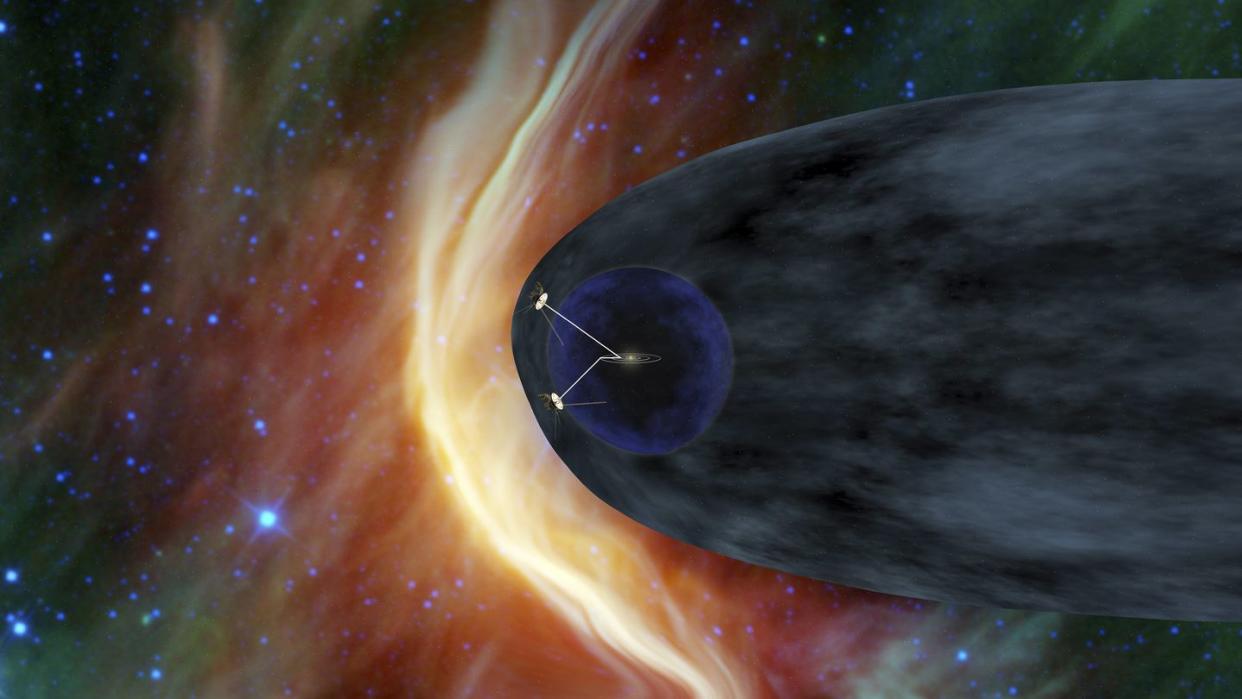Scientists Figured Out How to Probe the Boundary of the Solar System

While NASA has sent two probes out past our heliosphere—Voyager 1 and 2—there’s still a lot we don’t know about the protective shield around the Solar System.
A proposed Interstellar Probe Mission could send a spacecraft to investigate these long-standing mysteries, and a new study analyzes how that probe should exit our planetary system.
By exiting toward the tailward section of the heliosphere, a mission would maximize its scientific output and opportunities.
The heliosphere—the Sun-influenced region of space that surrounds our Solar System—still holds lots of mystery for astronomers. Chief among those mysteries is the exact boundary of the heliosphere and local interstellar space, known as the heliopause. While NASA has successfully sent two probes (Voyager 1 and 2) beyond this boundary, their original missions and advanced ages (they’re basically so buggy that they’re limited for science) means that one space agency or another will likely launch a future mission designed to study the heliosphere specifically.
And in a new study led by the University of Michigan (U-M), scientists propose the best path that a future spacecraft could take to exit the heliosphere. This isn’t necessarily the fastest way to exit the cul-de-sac of our galactic neighborhood—rather, it’s the path that best positions any future spacecraft for studying the shape of the heliopause. And in order to do that, you’ve got to leave the Solar System.
“Without such a mission, we are like goldfish trying to understand the fishbowl from the inside,” Sarah A. Spitzer, a research fellow at U-M and first author on a study in the journal Frontiers in Astronomy and Space Sciences that describes this “escape route,” said in a press statement. “A future interstellar probe mission will be our first opportunity to really see our heliosphere, our home, from the outside, and to better understand its place in the local interstellar medium.”
Despite its name, the heliosphere is not a sphere. Instead, it has both a nose and tail section—the former being where the heliosphere is closest to the Sun (and pointed in the direction of its galactic journey), and the latter extending off from this point, somewhat similar to a comet.
In 2021, a collaboration of more than 1,000 scientists developed a mission concept report that detailed a possible future interstellar mission. While the report discusses various launch vehicles and payloads, it also discusses possible trajectories. While the original report suggested sending a spacecraft 45 degrees off the nose, the U-M report challenges that conclusion. It instead suggests sending the scientific payload on “a trajectory intersecting the heliospheric flank toward the tailward direction,” which will provide the best perspective and opportunity for conducting a wide range of experiments.
“We want to know how the heliosphere protects astronauts and life in general from harmful galactic radiation, but that is difficult to do when we still don’t even know the shape of our shield,” co-author Marc Kornbleuth, a Boston University research scientist, said in a press statement. “If you want to find out how far back your house extends, walking out the front door and taking a picture from the front sidewalk is likely not your best option. The best way is to go out the side door so you can see how long it is from front to back.”
This position also comes with other advantages, as models suggest that interstellar plasma may enter the heliosphere through the tail, providing another unprecedented research opportunity.
So, while Voyager 1 and 2 were humanity’s first attempts at stretching beyond our own star system, they likely won’t be our last.
You Might Also Like

